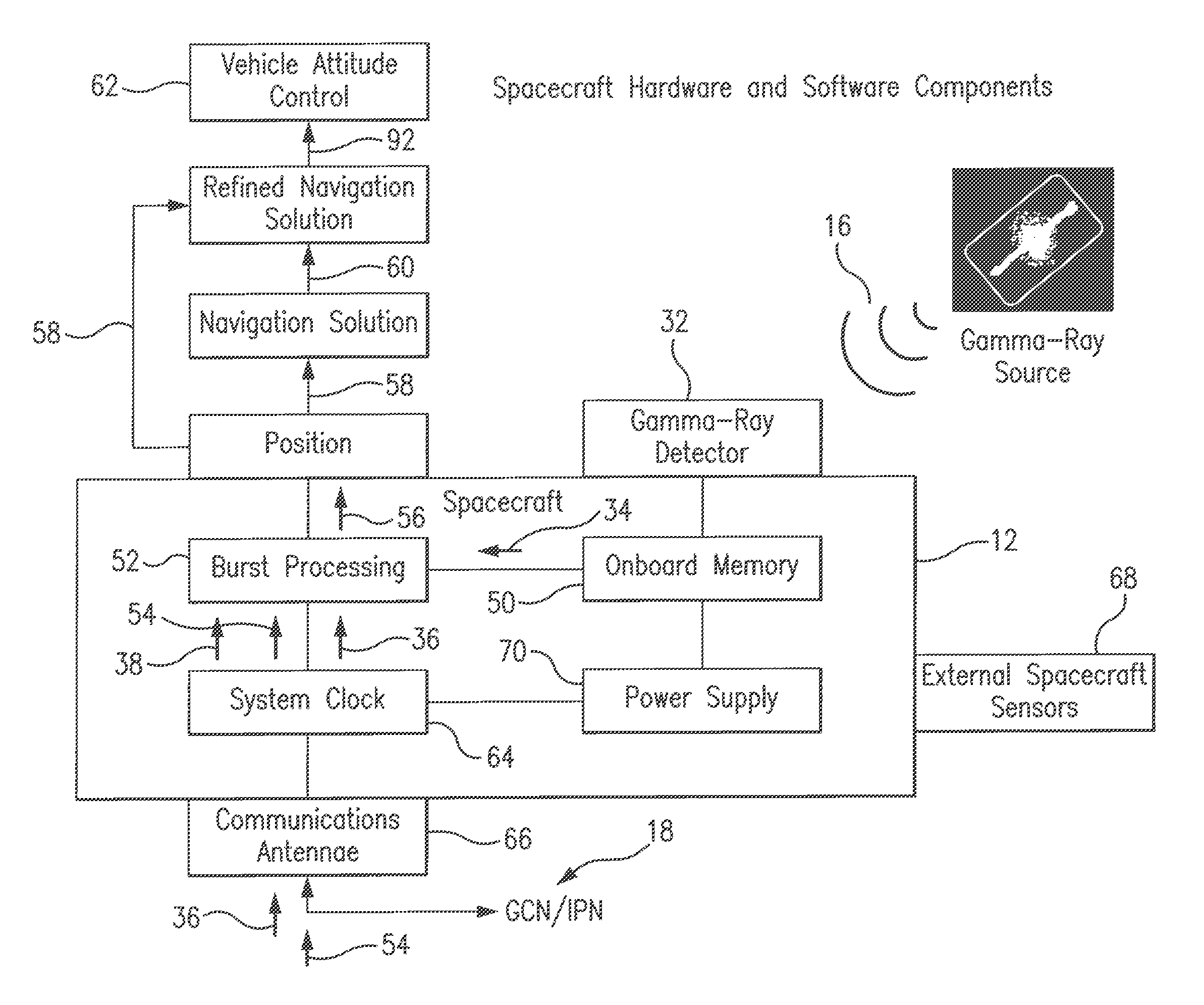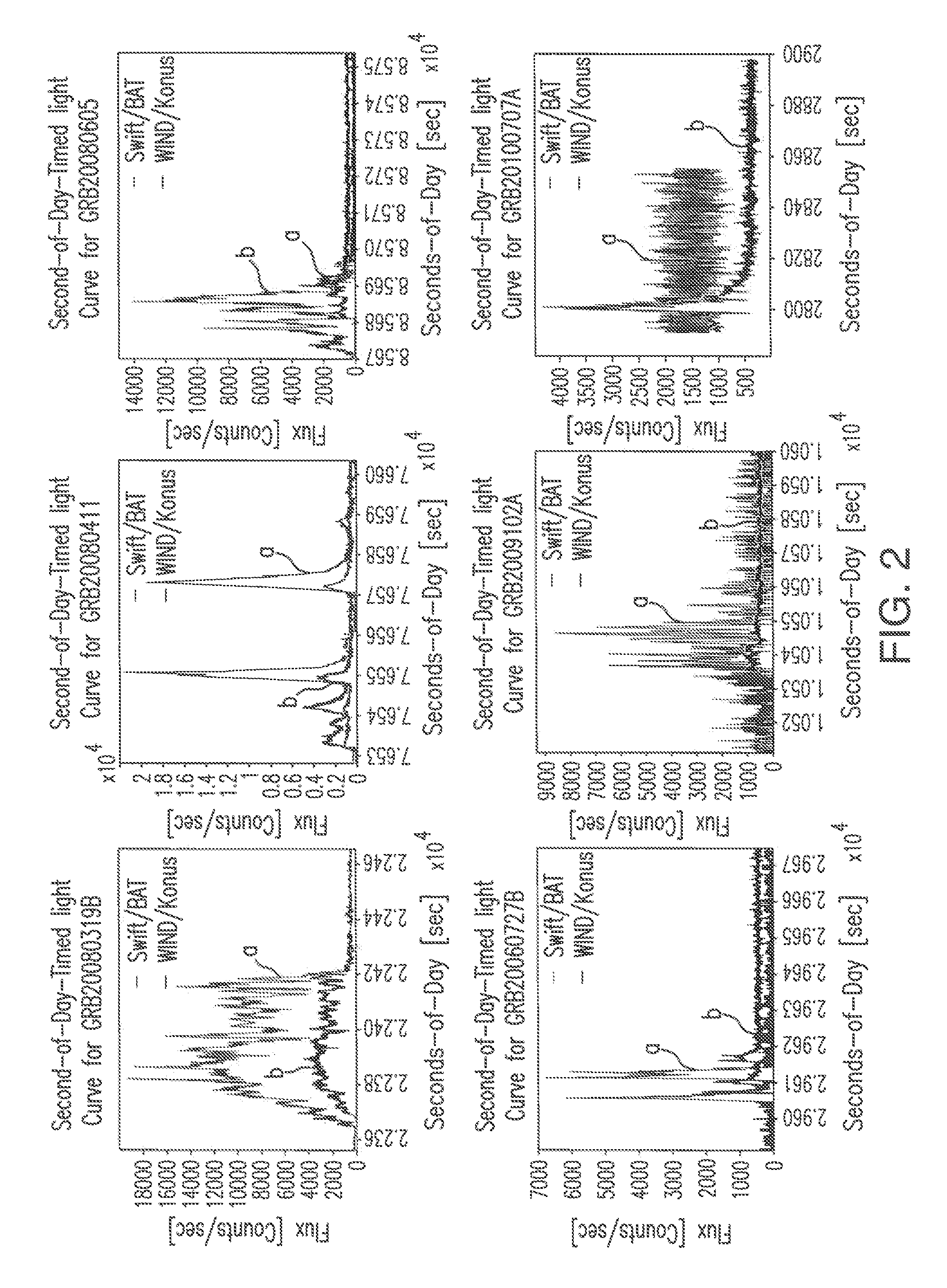Method and system for gamma-ray localization induced spacecraft navigation using celestial gamma-ray sources
a technology of gamma-ray localization and spacecraft, applied in the direction of navigation, instruments, surveying and navigation, etc., can solve the problems of increasing mission scheduling and operational costs, many x-ray pulsars are faint, and the existing system cannot provide this additional service, etc., to increase the on-board navigation and guidance capability, enhance position accuracy, and increase the accuracy
- Summary
- Abstract
- Description
- Claims
- Application Information
AI Technical Summary
Benefits of technology
Problems solved by technology
Method used
Image
Examples
Embodiment Construction
[0116]Referring to FIG. 1, representing the overall GLINT (Gamma-Ray Source Localization Induced Navigation and Timing) concept in an architecture for spacecraft navigation, the GLINT system 10 includes a high-resolution binning gamma ray detector sub-system for detection of gamma-ray photons from distant celestial gamma-ray bursts (GRBs) mounted on a vehicle (spacecraft) of interest 12, also intermittently referred to herein as a remote deep space vehicle (or spacecraft). The GLINT system also includes processor sub-system, mounted either on the spacecraft 12 of interest for an autonomous operation, or may reside and operate at a central control station, or alternatively may be distributed among participating stations in the overall GLINT architecture for the spacecraft 12 navigation.
[0117]Another high-resolution binning gamma-ray detector is mounted at a GLINT base station 14, also referred to herein as a reference (or observational) station orbiting the Earth. Both the remote spa...
PUM
 Login to View More
Login to View More Abstract
Description
Claims
Application Information
 Login to View More
Login to View More - R&D
- Intellectual Property
- Life Sciences
- Materials
- Tech Scout
- Unparalleled Data Quality
- Higher Quality Content
- 60% Fewer Hallucinations
Browse by: Latest US Patents, China's latest patents, Technical Efficacy Thesaurus, Application Domain, Technology Topic, Popular Technical Reports.
© 2025 PatSnap. All rights reserved.Legal|Privacy policy|Modern Slavery Act Transparency Statement|Sitemap|About US| Contact US: help@patsnap.com



